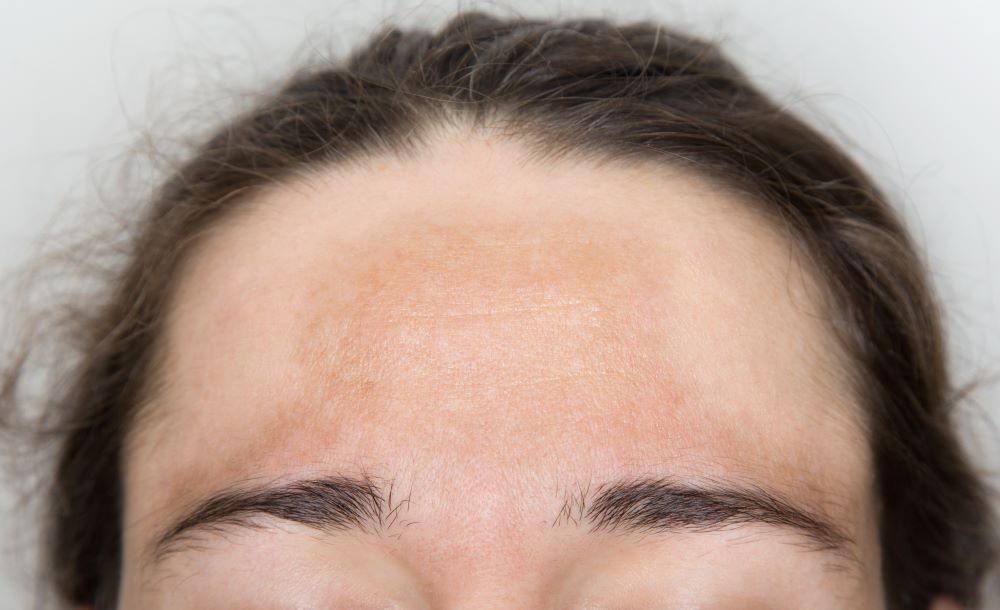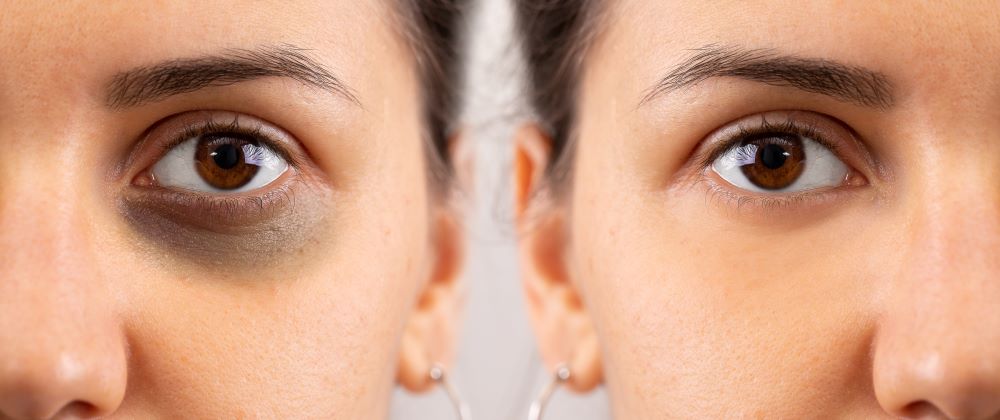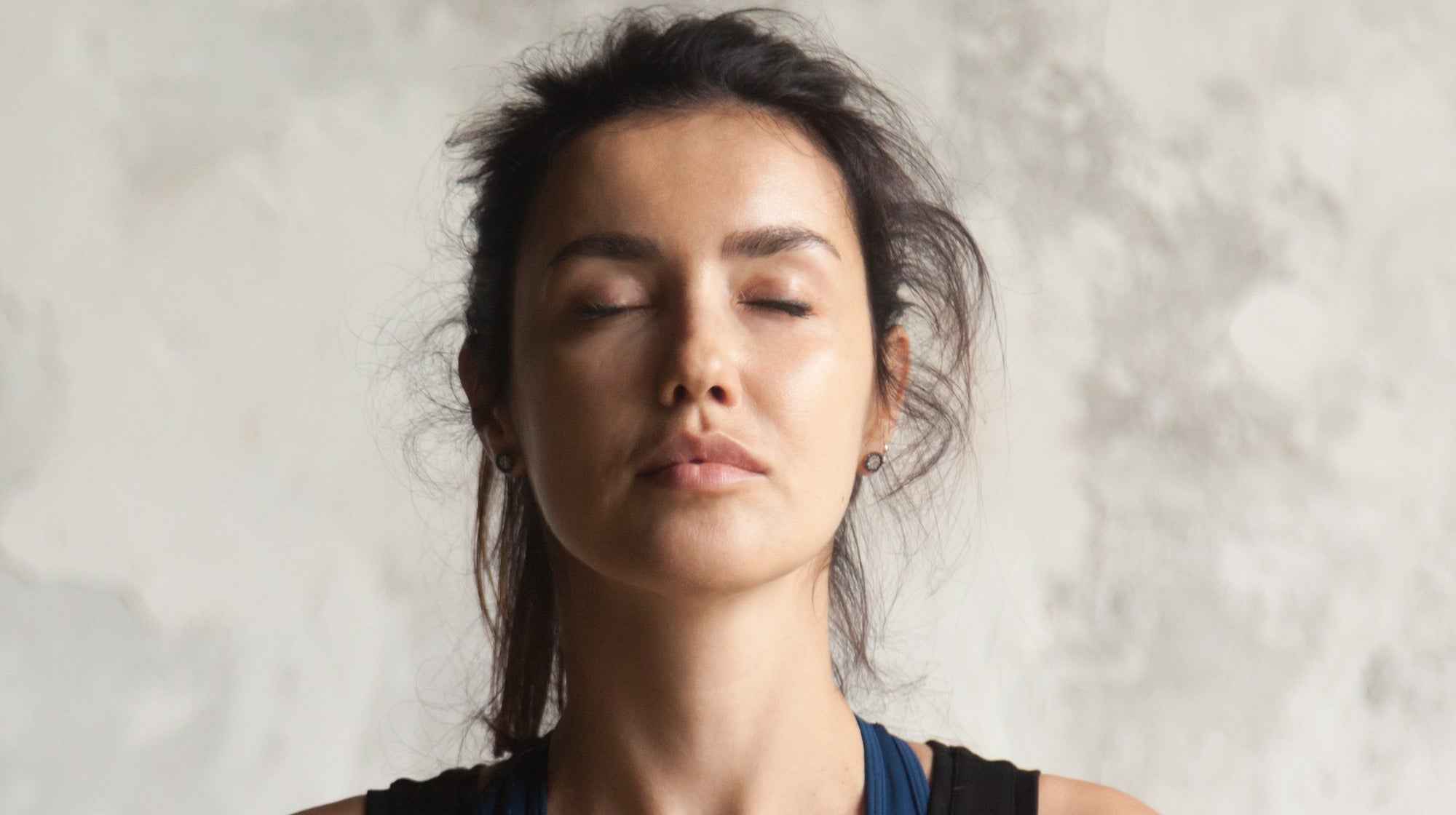Hyperpigmentierung, Altersflecken und Sonnenflecken sind alle Arten von Pigmentflecken. Sie können plötzlich und bei Menschen jeden Alters auftreten, nicht nur bei Menschen über 50. Der Urlaub in der Türkei ist eine Möglichkeit. Dort gibt es viel Sonne, Sand, Partys und vielleicht zu viel Spaß in Kombination mit keinem Sonnenschutzmittel. Sie sind 25 Jahre alt, sorglos, und Pigmentflecken gehören nicht dazu. Sie tauchen aus dem Nichts auf. Nicht nur die Erinnerungen an diesen Sommer haben sich ins Gedächtnis eingeprägt, sondern auch die braun-graue Hyperpigmentierung auf der Haut, die je nach Jahreszeit heller oder dunkler ist. Auch Hormone können der Auslöser sein. Während der Schwangerschaft zum Beispiel, wenn die Hormone schwanken, können Sommersprossen oder Hyperpigmentierung im Gesicht und Körper auftreten oder während der Pubertät gerade bei jungen Frauen die die Anti-Baby Pille nehmen. Aber was können Sie tun? Die Haut eines Menschen ist nicht perfekt. Pigmentierte Hautveränderungen können bei etwa 90% der Deutschen beobachtet werden, so die Prognosen. In der Regel sind Pigmentflecken, die einen roten, braunen oder ockerfarbenen Farbton haben, nicht schädlich und müssen nicht medizinisch behandelt werden. Manche Menschen sehen die Verfärbungen jedoch als kosmetischen Makel an. Diejenigen, die von Hautverfärbungen betroffen sind, haben oft Probleme mit ihnen im Gesicht. In diesem Beitrag erfahren Sie, woher Pigmentflecken kommen und wie Sie sie loswerden können
Das Wichtigste in Kürze
- Pigmentflecken sind in der Regel kein Grund zur Sorge! Sie kommen oft plötzlich und unerwartet nach zu viel Sonne oder auch bei Hormonveränderungen.
- Es gibt verschiedene Arten von Hyperpigmentierungen die sich in folgende Typen unterteilen lassen: Melasma, weiße und braune Pigmentflecken, Sommersprossen, Altersflecken, Pickelmale, Naevus, Vitiligo.
- Je nach dem gibt es Hausmittel oder professionelle Hilfe falls Sie ihr Pigmentflecken loswerden möchten.

Was ist die Ursache von Pigmentflecken?
Pigmentflecken können durch verschiedene Ursachen entstehen. Ein Teil der Gründe für ihre Entstehung liegt in der Genetik. Es ist auch bekannt, dass Hormone bei der Hyperpigmentierung eine Rolle spielen. Frauen bekommen oft Melasma (verfärbte Hautflecken) während der Schwangerschaft oder als Folge der Einnahme der Antibabypille. Melasma, d.h. verfärbte Hautflecken, sind bei Frauen während der Schwangerschaft recht häufig. Eine der häufigsten Ursachen für die Pigmentierung der Haut ist außerdem übermäßige Sonneneinstrahlung.
Obwohl es viele mögliche Auslöser gibt, entwickeln sich Pigmentflecken in der Regel auf die gleiche Weise. Das liegt daran, dass die Farbveränderung durch Melanin, das körpereigene Hautpigment, verursacht wird. Wenn eine punktuelle Überproduktion von Melanin durch eine der oben genannten Ursachen ausgelöst wird, entsteht als Folge davon ein Pigmentfleck.
Können Pigmentflecken plötzlich auftreten?
Manche Menschen werden mit Hyperpigmentierung geboren, während andere sie erst später im Leben entwickeln. Pigmentflecken können auch plötzlich auftreten. Wenn Sie schnelle Hautveränderungen feststellen, sollten Sie ggf. einen Arzt aufsuchen. Pigmentflecken können von selbst verblassen oder sich ganz auflösen, sie sind nicht immer dauerhaft. Viele pigmentierte Veränderungen der Haut erfordern jedoch eine spezielle Behandlung, um sie sicher und effektiv zu entfernen.
Was sind die verschiedenen Arten von Hyperpigmentierung?
Es gibt viele Arten und Ursachen für braune Flecken auf der Haut. Einige der häufigsten Hautveränderungen sind:
Pigmentfleck
Dunkle Flecken auf der Haut werden im Allgemeinen als Pigmentflecken bezeichnet. Diese können auf viele verschiedene Ursachen zurückzuführen sein, aber UV-Strahlung ist in der Regel eine der Hauptursachen.
Sommersprossen
Sommersprossen sind relativ kleine, goldbraune Flecken, die vor allem im Sommer auftreten. Die Wahrscheinlichkeit, Sommersprossen zu haben, wird von Ihren Genen bestimmt. Die Sonneneinstrahlung begünstigt ihr Wachstum, insbesondere an Stellen wie dem Gesicht, den Armen oder den Schultern.
Altersflecken
Wie der Name schon sagt, sind Altersflecken eher bei älteren Menschen zu finden. Sie treten meist an Körperstellen auf, die lange dem Sonnenlicht ausgesetzt waren, z. B. im Gesicht, an den Armen und Händen.
Melasma
Melasma ist eine Art von Hyperpigmentierung, die bei Frauen während oder nach der Schwangerschaft häufig auftritt, typischerweise im Gesicht. Aber auch andere hormonelle Veränderungen können ein Melasma verursachen, z. B. die Einnahme oder das Absetzen der Antibabypille.
Pickelmale
Pickelmale sind rote oder braune Flecken auf der Haut, die sich dort bilden, wo einst ein entzündeter Pickel war.
Naevus
Muttermale, besser bekannt als Naevi oder Leberflecken, sind eine besondere Form der Hyperpigmentierung. Das liegt daran, dass nicht nur eine Pigmentveränderung vorliegt, sondern auch eine Gewebeveränderung. Daher sollten Sie niemals versuchen, diese selbst zu Hause zu behandeln - sprechen Sie immer zuerst mit einem Dermatologen darüber.
Vitiligo
Vitiligo ist eine Hautkrankheit, die durch weiße Flecken gekennzeichnet ist, die das Gegenteil der normalen Pigmentflecken sind. Anstatt zu viel Melanin zu produzieren, wie es bei klassischen Pigmentflecken der Fall ist, wird nicht genug produziert; daher erscheinen sehr helle Flecken auf der Haut. Als Ursache wird eine vererbbare genetische Anomalie angenommen.
Sind Pigmentflecken gefährlich?
Pigmentflecken sind zunächst ein kosmetisches Problem. Wer möchte schon gräuliche Flecken im Gesicht haben, die dem Bart einer Frau über der Oberlippe ähneln, wenn dort kein einziges Haar wächst? Wenn sich die Hyperpigmentierung über die Wangen und Schläfen ausbreitet, ist dies lediglich eine natürliche Reaktion auf die erhöhte Melanin Produktion und kein Grund zur Sorge. Leberflecken können sich zu Hautkrebs entwickeln, aber Pigmentflecken sind nicht gefährlich.
Wie wird man Pigmentflecken los?
Es gibt viele Möglichkeiten, mit kleinen Pigmentflecken umzugehen. Idealerweise würden die Menschen sie als eine einzigartige persönliche Note und nicht als Makel betrachten. Aber oft ist das nicht der Fall. Einzelne Pigmentflecke können mit Make-up oder speziellen Abdeckmitteln kaschiert werden. Bei extrem dunklen Pigmentflecken kann dies eine ziemliche Herausforderung sein. Um das Verblassen von Pigmentflecken zu unterstützen, sind auch bleichende Chemikalien auf dem Markt erhältlich. Hier ist große Vorsicht geboten. Die Mittel wirken möglicherweise nicht wie vorgesehen oder verursachen schwere Hautreizungen. von "Selbstversuchen" und anderen DIY-Verfahren ist abzuraten. Im Falle eines besorgniserregenden Pigmentflecks sollte stattdessen ein Dermatologe aufgesucht werden, um den Pigmentflecken zu entfernen.
Pigmentflecken entfernen
Sonnenschutz
Die wichtigste Komponente für alle Arten der Behandlung von Pigmentflecken ist ein wirksamer Sonnenschutz. Die beste Methode zur Vorbeugung von Hyperpigmentierung ist die Verwendung von Sonnenschutzmitteln, die Sie vor UV-Strahlung schützen, insbesondere vor blauer UV-Strahlung. Ohne angemessenen Sonnenschutz sind alle Behandlungen, die Sie anwenden, weniger wirksam und die Ergebnisse sind nur von kurzer Dauer. Pigmentflecken können zwar behandelt werden, aber sie können auch schneller zurückkehren, wenn Sie keine Sonnencreme verwenden. Verwenden Sie vorzugsweise moderne, kompatible UV-Filter wie Eisenoxide und Tinosorb M zusätzlich zu einem hohen LSF (der vor UVB-Strahlung schützt) und einem hohen PPD (der vor UVA-Strahlung schützt).
Microneedling
Mit Hilfe eines Dermarollers, an dem winzige Nadeln angebracht sind, kann das Pigmentierungs-Microneedling dazu beitragen, eine bestehende Hyperpigmentierung loszuwerden oder sie sogar ganz verschwinden zu lassen. Diese Mikroverletzungen bewirken, dass die Haut neues Bindegewebe und Kollagen bildet, wodurch die Hyperpigmentierung allmählich zurückgeht.
Vitamin C
Vitamin C regt die Immunzellen an, effektiver zu arbeiten, so dass sie Pigmente schneller aus den Hautzellen entfernen können. Spezialisierte Cremes und Seren zur Behandlung von Pigmentierungen verbessern nicht nur das aktuelle Erscheinungsbild Ihrer Haut, sondern verhindern auch die Entstehung neuer Hyperpigmentierungen. Sie schützen zum Beispiel vor freien Radikalen, versorgen die Haut mit Vitamin C und reduzieren die Exposition der Zellen gegenüber UV-Licht.
Aloe Vera
Aloe-Vera-Gel wird seit langem für seine heilenden Eigenschaften angepriesen, sowohl innerlich als auch äußerlich. Es wird häufig zur Linderung von Sonnenbrand verwendet, kann aber auch auf kleinere Schnitt- und Schürfwunden aufgetragen werden. Zahlreiche Hautpflegeprodukte machen sich die lindernden Eigenschaften der Aloe zunutze. Und nun haben wissenschaftliche Studien bestätigt, was in vielen Kulturen bereits bekannt ist: Aloe Vera kann bei der Heilung von Dermatitis und anderen entzündlichen Hauterkrankungen helfen.
Chemisches Peeling
Eine professionelle Peeling-Behandlung kann auch bei der Entfernung von unerwünschten Flecken helfen. Chemisches Peeling ist eine Form der chemischen Therapie, bei der eine bestimmte Substanz auf die Haut aufgetragen wird, um ein bestimmtes Ergebnis zu erzielen. Infolge des Rückgangs der Melaninproduktion und des anschließenden Absterbens der Hautzellen schälen sich später die darüber liegenden Hautschichten ab und legen neuere darunter liegende Hautzellen frei. Je nach Ausmaß der Pigmentstörung können mehrere Behandlungssitzungen erforderlich sein, um die besten Ergebnisse zu erzielen.
Pigmentflecken vorbeugen
Um Pigmentflecken vorzubeugen, sollten Sie Stress für die Haut so weit wie möglich vermeiden. Da UV-Strahlung in erster Linie für die Entstehung von Pigmentflecken verantwortlich ist, ist es wichtig, dass Sie Ihr Gesicht und Ihren Körper immer mit einem Sonnenschutzmittel mit hohem Lichtschutzfaktor schützen - idealerweise ist dieser bereits in Ihrer Creme enthalten. Die Auswirkungen der UV-Strahlung werden nicht durch das Wetter oder die Jahreszeit beeinflusst. Daher ist es das ganze Jahr über wichtig, Sonnenschutzmittel mit LSF zu verwenden, um diese schädlichen Strahlen zu vermeiden.



